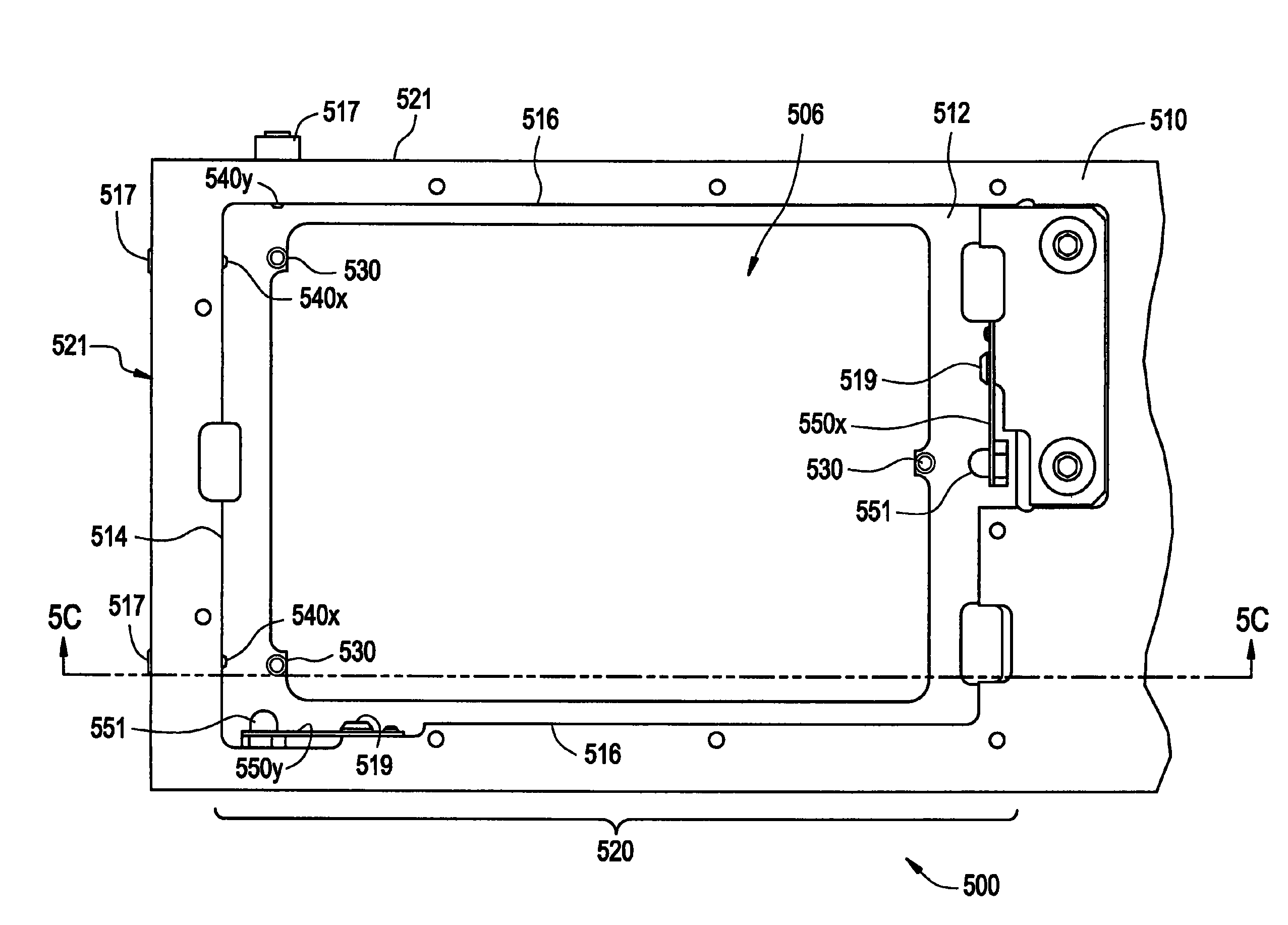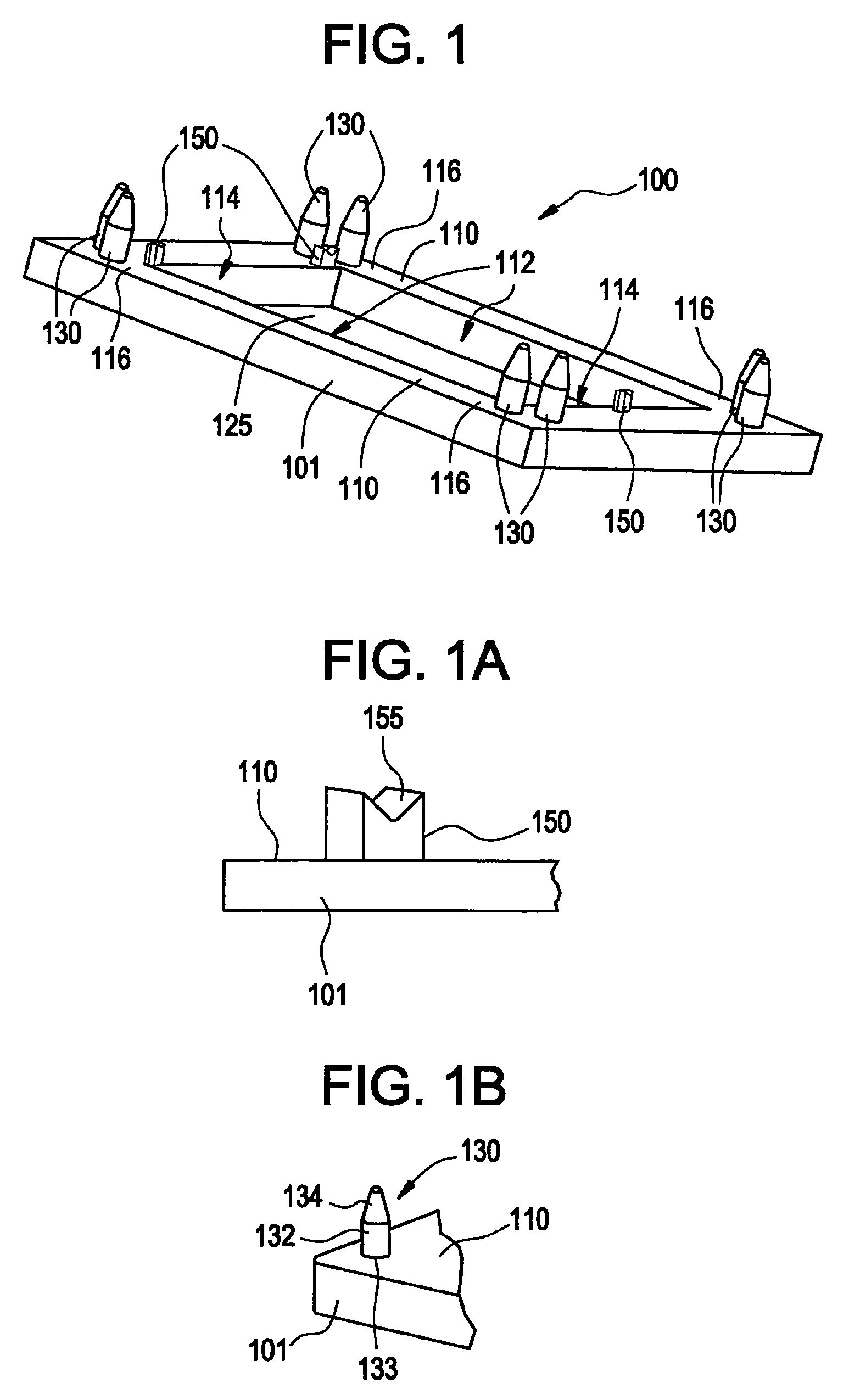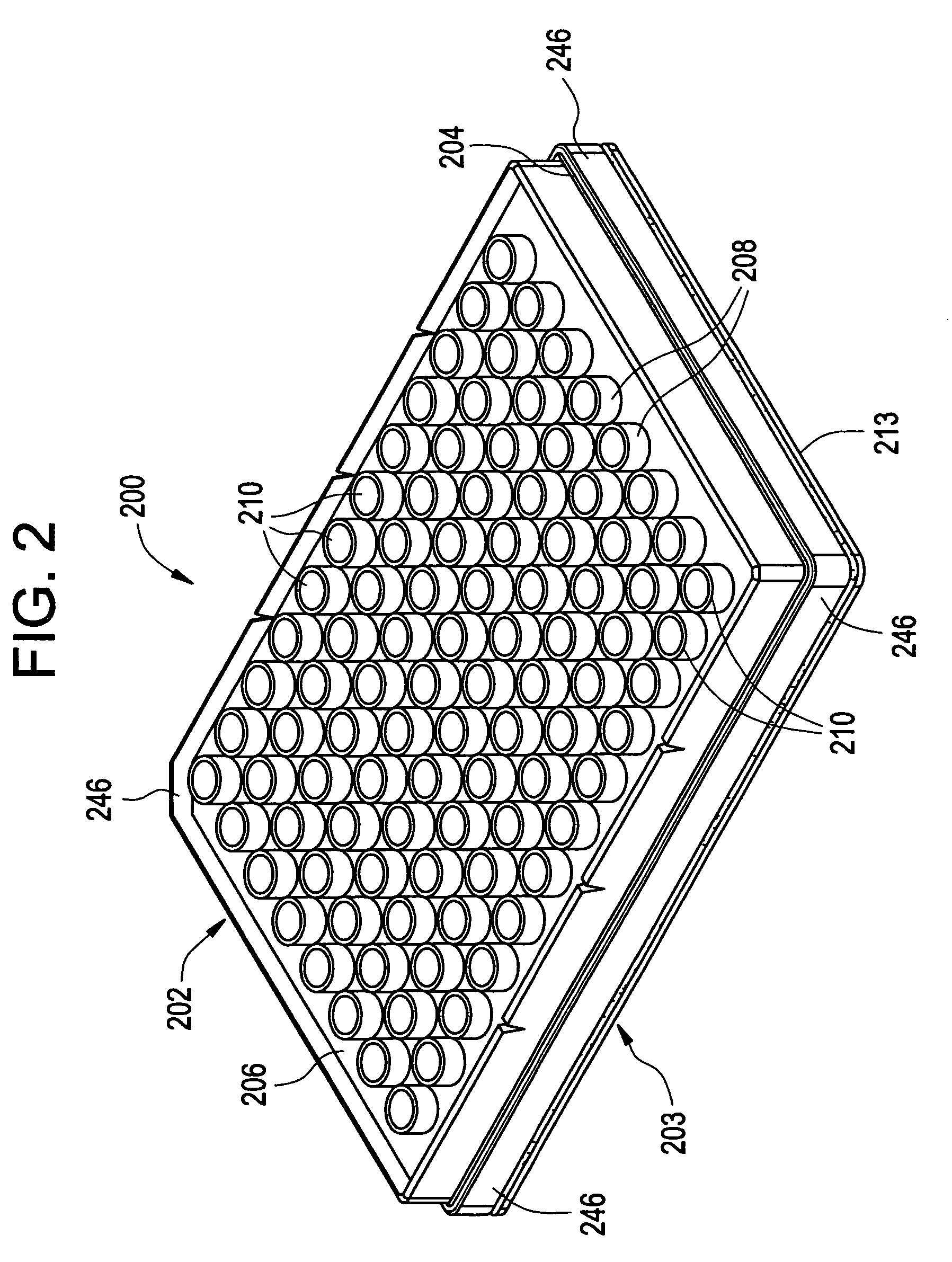Kinematic wellplate mounting method
a technology of kinematic wellplates and mounting methods, applied in the direction of analytical using chemical indicators, laboratory glassware, instruments, etc., can solve the problems of adverse effects of second/final measurement results, and achieve the effect of reducing the range of motion
- Summary
- Abstract
- Description
- Claims
- Application Information
AI Technical Summary
Benefits of technology
Problems solved by technology
Method used
Image
Examples
Embodiment Construction
[0040]In the following detailed description, for purposes of explanation and not limitation, exemplary embodiments disclosing specific details are set forth in order to provide a thorough understanding of the present invention. However, it will be apparent to one having ordinary skill in the art that the present invention may be practiced in other embodiments that depart from the specific details disclosed herein. In other instances, detailed descriptions of well-known devices and methods may be omitted so as not to obscure the description of the present invention.
[0041]The restraining mechanism 100 in accordance with one embodiment of the present invention is illustrated in FIG. 1. The mechanism 100 comprises a structure / base 101 having a surface 110, as well as three supports 150 projecting from the base 101 which are capable of supporting a microplate. Two side walls 112 and two end walls 114 intersect in corners 116 to form a rectangular periphery having an opening or a detectio...
PUM
 Login to View More
Login to View More Abstract
Description
Claims
Application Information
 Login to View More
Login to View More - R&D
- Intellectual Property
- Life Sciences
- Materials
- Tech Scout
- Unparalleled Data Quality
- Higher Quality Content
- 60% Fewer Hallucinations
Browse by: Latest US Patents, China's latest patents, Technical Efficacy Thesaurus, Application Domain, Technology Topic, Popular Technical Reports.
© 2025 PatSnap. All rights reserved.Legal|Privacy policy|Modern Slavery Act Transparency Statement|Sitemap|About US| Contact US: help@patsnap.com



